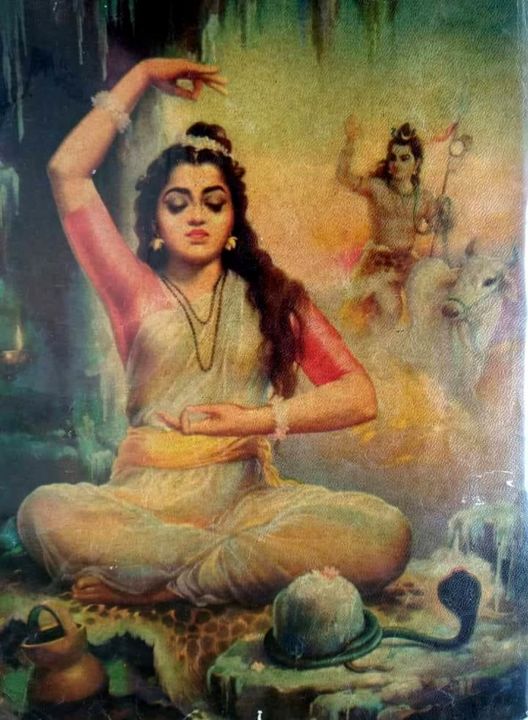
Hartalika Teej
Teej is a major festival in Hinduism celebrated by women, especially married ones. ‘Teej’ literally means third, and the festival is celebrated on the third day of full moon or new moon. There are 4 primary teej—Akshaya Teej, Kajari Teej, Hariyali Teej and Hartalika Teej .
Hartalika Teej is celebrated to mark the joyous reunion of Lord Shiva and Goddess Parvati. It falls on Shukla-paksh tritiya of Bhadrapad month [third day of bright half of Bhadrapad, falling around August and September]. Married and single women observe fast for marital bliss and for getting an ideal husband respectively.
As the legend goes Shakti (the primordial power) incarnated as Shailputri (the daughter of Himalaya). In childhood itself, She accepted Lord Shiva as Her husband, and resorting to a strict and ascetic life performed great penance to please Him. Seeing Her condition, Her father King Himavat decided to marry Her to Lord Vishnu. Parvati was shocked and She asked a friend for help. Her friend led Her into thick forest so that She could avoid marrying against Her wish. Here comes the literal meaning of the word ‘Hartalika’ which is the combination of ‘Harat’ and ‘Aalika’ i.e. ‘abduction‘and ‘female friend’ respectively as Parvati was abducted by Her friend. Parvati underwent penance for years without food or water. On the third day of Bhadrapad, Parvati made a Shivalingam from Her hair. That day Shiva was impressed and accepted Her as His consort. Since then the day is known as Hartalika Teej. This story was narrated by Shiva Himself while reminding Parvati about Her true Self.
It is important for women to hear Hartalika vrat katha (story) this day. Fasting is an integral part of this worship which is also known as ‘Nishivasar Nirjala Vrat’ – ‘Nishivasar’ means entire night & day, and ‘Nirjala’ means without water. Women stay up all night singing praise to the goddess, narrating the story, etc. They not only abstain from food but also do not drink a drop of water for 24 hours. Fasting norms are not so strict for the elderly, sick and pregnant women. Thus, for a day they are fully attuned with Devi Parvati, the Tapasvini. Dressing up in elegant attire is integral to this day. Women make sand or clay idols of Shiva-Parvati offering bilva leaves and flowers etc. Next day the fast is completed with worshipping rituals and with the immersion (visarjan) of the holy idols in rivers or local water bodies.
This vrat is known as ‘vratraj’ (king of fasts) as it is most prominent of them all.
Author Ms Hema Trivedi is an ardent devotee of Sri Krishna.